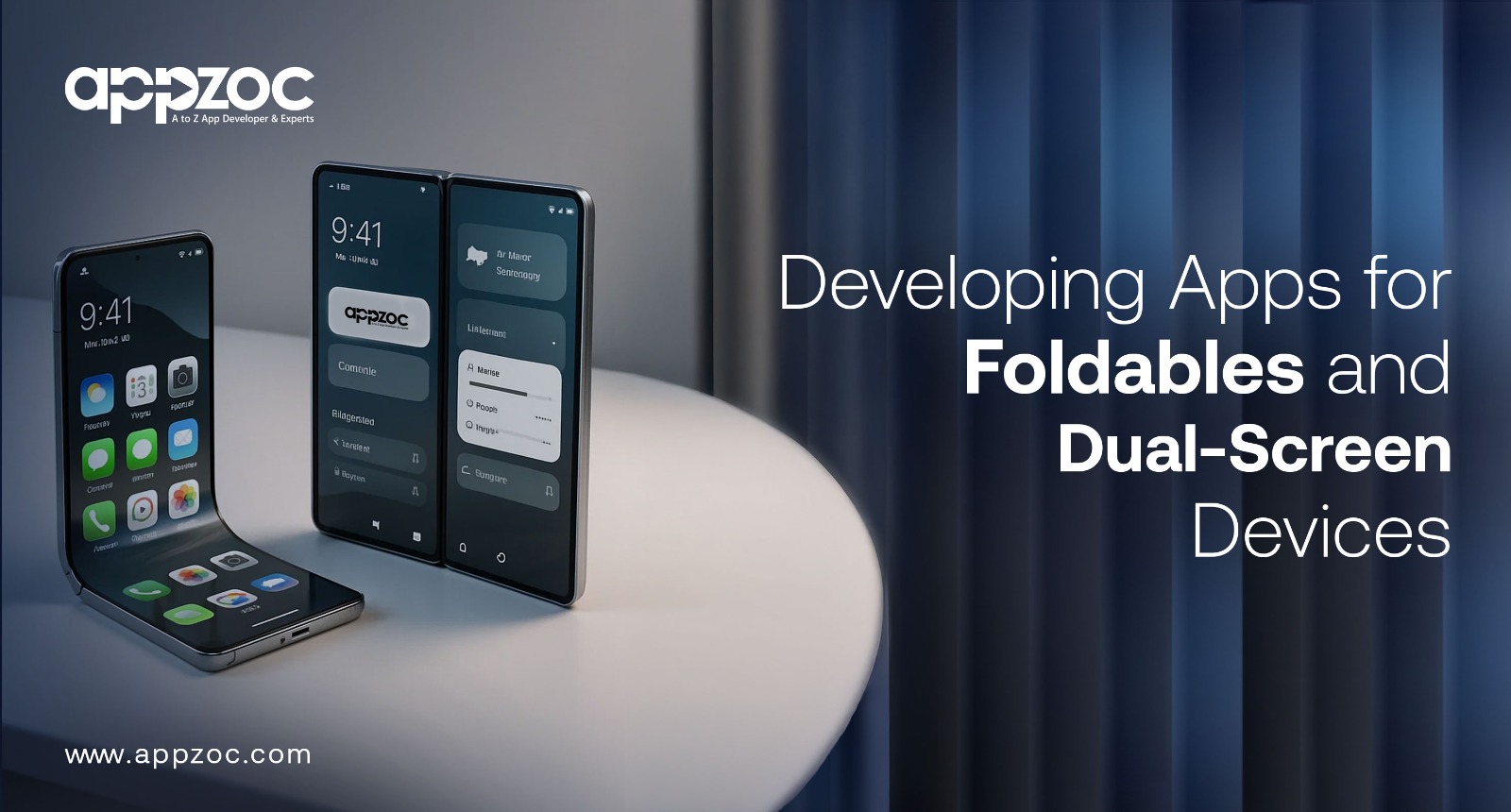
Flutter
Make the most of this cutting-edge technology by developing apps quickly! Our Flutter solutions have amazing features that can be used to create sleek, high-performance apps that can scale seamlessly across platforms.

Mobile technology is evolving fast, and foldable dual-screen devices are leading the way. Smartphones continue to push boundaries of innovation, and developing apps that are compatible with these futuristic technologies is becoming essential. For businesses looking to stay ahead, partnering with tech experts who understand the demands of modern app development is very necessary. These innovations offer unique challenges and opportunities for app developers, especially in tech hubs of Bangalore and Kochi. In this blog, we’ll uncover the unique challenges and opportunities in developing apps for foldable and dual-screen devices and explore how top mobile app development companies in Cochin and beyond are leading the way with innovative solutions.
Why do app foldables and dual-screen devices matter?
Foldables and dual-screen devices offer a new dimension in interactivity.From multitasking with split-screen interfaces to immersive gaming and reading experiences, these features unlock powerful new ways for consumers to engage with apps. As of 2025, several major tech giants are heavily investing in foldable devices. Companies like Samsung, Microsoft, and Google are leading this shift, signalling their importance in shaping future user experiences.
However, the dynamic screen sizes and fold states require apps to be highly adaptive and responsive to deliver user experiences.
Key challenges in developing foldables and dual-screen services
Developing foldables and dual-screen apps is more complicated compared to traditional mobile app development due to several factors.
Screen continuity: Apps must maintain a smooth and consistent user experience when the device transitions between folded and unfolded states.
Multiple screen sizes and orientations: The foldable devices come in various sizes, and they can be used in portrait or landscape mode, folded and unfolded. The developers must design adaptive layouts that cater to all these scenarios.
Aspect ratio flexibility: With varying screen sizes and aspect ratios, static layouts often break. Responsive design using ConstraintLayout (in Android) or Flutter’s LayoutBuilder becomes essential.
Testing and Emulation: Integrating foldable behaviour development using emulators and real device testing is a very important one. Google and Samsung provide tools for testing folds, hinges and display transitions.
For businesses that prioritise mobile user engagement, adapting to foldable devices can offer a strategic advantage. Working with the right development team ensures your product remains relevant and optimised for every screen, angle and fold.
Whether you are searching for any Android development services in Bangalore, an iOS development company in Kochi or any holistic solutions from mobile app development companies in Cochin, the expertise is already in your hands. Being with the right strategic partner, we help you in staying ahead of the curve, delivering apps that embrace the dynamic nature of modern hardware.
Conclusion
Foldable and dual-screen devices are not just a trend; they are reshaping the way people interact with mobile apps. These new form factors offer users more flexibility, better multitasking and unique ways to experience the content. To fully take advantage of the opportunities, apps need to be fully designed and developed for them. Partnering with the right team means more than just building an app; you’re crafting a future-ready experience that sets your brand apart. As the foldable device is becoming more common, adopting the best app design helps the business stay ahead of the competition in the fast-changing digital world.
Don’t wait for the future to catch up! Let’s build it together. Connect with our expert team today and take the first step toward innovation.